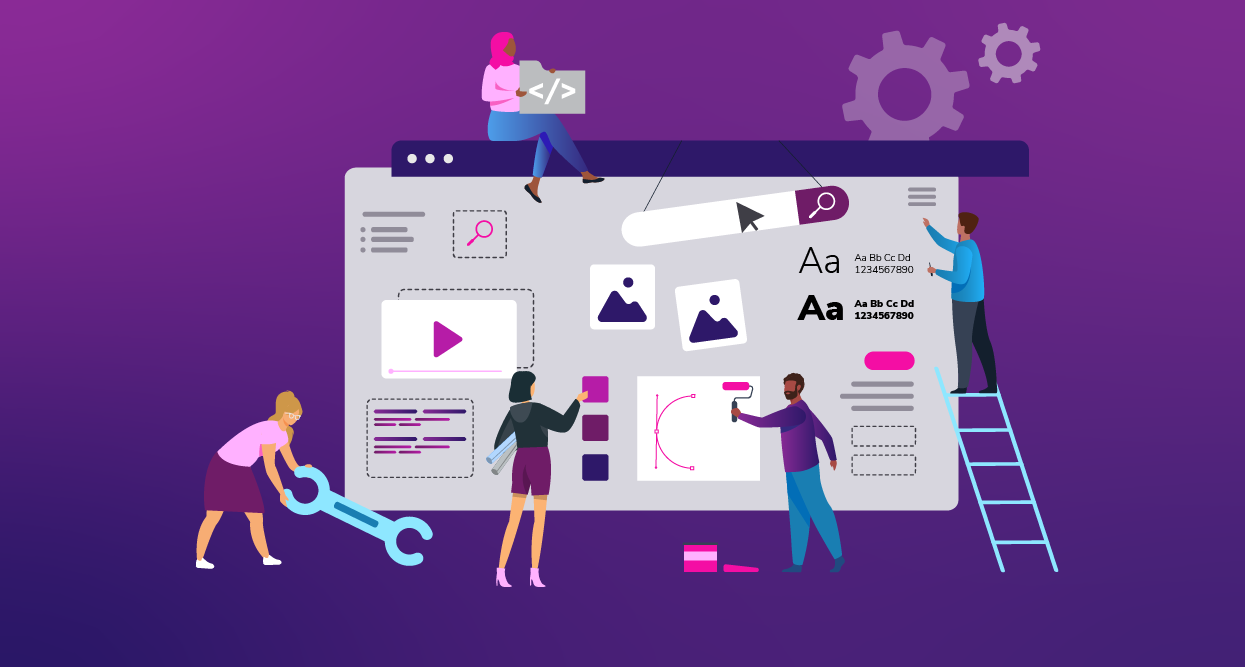
Adopting a design system can make composable initiatives very successful.
Companies are moving towards composable applications with performance and top-notch functionality, but without proper design, they can be limited to creative teams. To mitigate this, design considerations should be made during the planning and implementation of composable initiatives.
a little history
The term “composable architecture” was coined by Jonathan Murray in 2013. Almost a decade after its creation, the concept of composable architecture (often referred to as headless) is now becoming mainstream and bearing fruit. Composability is a term that encompasses many things, including ideas, technologies, and processes that enable organizations to innovate and adapt to ever-changing business needs.
Composable is the natural evolution and acceleration of the digital business we interact with on a daily basis. Businesses can deliver the resilience and agility their customers expect. A composable business is essentially composed of interchangeable building blocks, or, more simply, Lego pieces that can be combined and matched to achieve different outcomes and solve different problems. means to create an organization that
Interestingly, around 2013 another term was coined that is directly related to composable architecture. Atomic Design, coined by Brad Frost, is a framework for designing and building scalable design systems.
For many, it’s not entirely self-explanatory, but the principles of composable architecture and atomic design are closely related. On the IT side, these technologies are generally rushed to adopt because they have a promising future, but they are more than just IT capabilities. It’s important to stop at these thoughts because the true success of any technology lies in its underlying design and implementation. The design team can act as an enabler for this success and should be seen as a mission-critical stakeholder from early discussions through to implementation.
Adopting a design system early on has proven to be key to the success of any composable initiative. This not only allows you to take a leading role in its success, but also empowers development teams to create better and easier-to-use tools and products.
Design is atomic
As the interaction between brands and their customers, especially across channels, has grown exponentially, customer expectations have risen correspondingly. As these expectations rise, digital experiences are inherently more complex. Atomic design serves as a core principle and foundation that enables companies to scale experiences across multiple channels simultaneously while maintaining brand consistency.
The atomic design methodology has five stages. Each stage builds on the previous stage and acts as a collection of items from the previous stage.
- atom The smallest building block of our system. These are buttons, labels, typography, iconography, and other elements that cannot be broken down further.
- molecule Aggregate multiple atomic-level elements and start putting them together into new groups.
- creature A more complex collection of atoms and molecules.
- template These are the first steps in an atomic design methodology that moves away from molecular referencing, but are essential to building digital experiences. Templates are the starting point for building elements into a cohesive design and scale.
- page This is the most concrete stage of Atomic Design as it is what the user sees and interacts with.
What is a design system?
By leveraging the principles of Atomic Design, you have a blueprint for your design system. At a minimum, a design system is a collection of reusable design elements and standards that guide how these elements work together.
As design systems become more sophisticated, they need to cover the entire design platform, including design tools, brand identity (colors, typography, buttons, patterns), UI and app components, code libraries, content libraries, documentation, workflows, and more. I have.
endless opportunities
The benefits of design systems are pervasive and extensible, and when implemented correctly, spread across an organization. Design systems create a unified language across cross-functional teams, serve as the proverbial Rosetta stone between design and engineering, and most importantly, deliver a unified experience for your customers. A design system can integrate and benefit from all of the following aspects of your digital organization:
- speed Unlocked to enable engineering teams to build digital experiences from a core set of principles
- Consistency Enforced by building from existing elements without deviating from the library
- optimisation enabled by being able to predictably measure and tune within a defined set of components
- personalization Unlocked by seamless integration into existing components and patterns
- accessibility Built-in and not added when working from the defined library
- Adaptability Anticipated and expected, but only achievable if the right foundation exists
- communication Streamlined when cross-functional teams speak the same language
A well-designed design system can open many doors within an organization. Whether it’s scaling quickly, driving innovation with new, cutting-edge experiences, or simply bringing a cohesive experience to your customers. That said, there’s one thing a design system can’t do. It limits your creative flexibility. Creativity may feel like it’s been boxed in, but instead think of it as a shift in creative thinking intent to focus on key moments and experiences.
So where do we go from here?
We’ve outlined some of the many ways a design system can help support internal teams, bring business functions closer together, and help drive building the best tools and products. In addition to resources, we help our clients take their teams to the next level.

